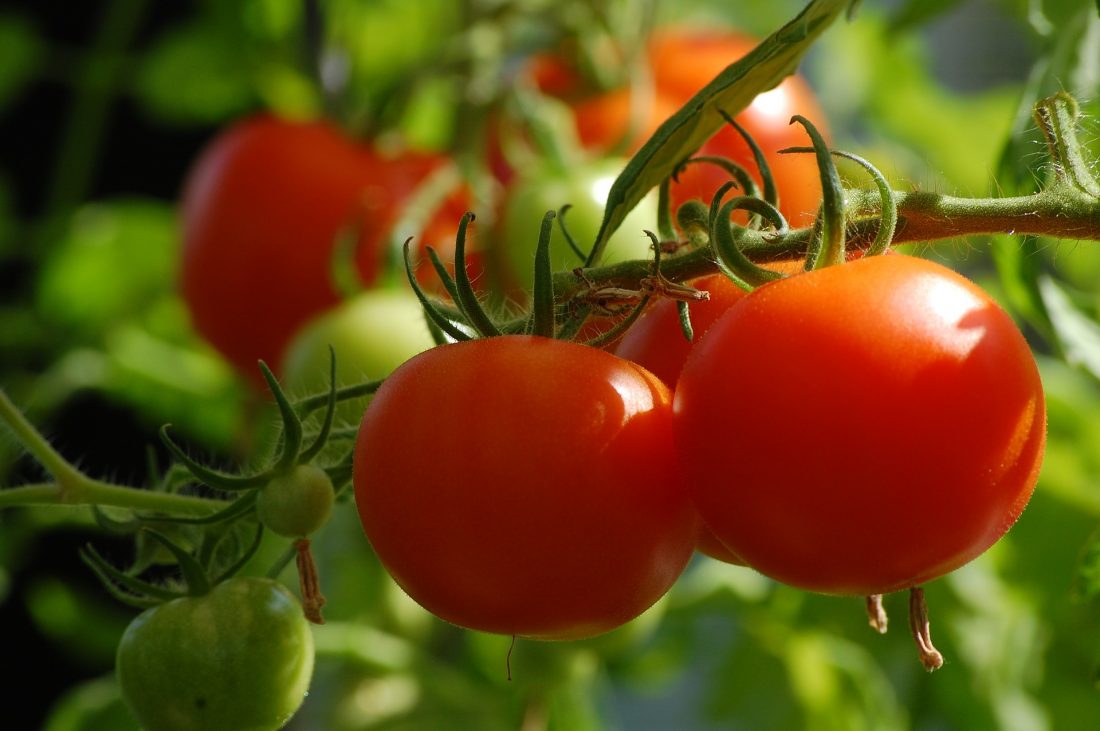Tomatoes: Diagnosis of common issues

Tomatoes are one of American gardener’s most favorite vegetables to grow. Roughly, 86% of gardeners who grow vegetables, grow tomatoes. By the way, tomatoes, and cucumbers, squash and peppers are actually fruit. While we wait to patiently harvest our first ripe, delicious tomato, here are some questions and answers about common problems that can come between you and that perfect tomato. These problems are some of the most common ones I have gotten calls on this year or asked in years prior.
Why do my tomatoes crack sometimes?
Cracking occurs when the fruit grows too quickly as it matures. The cracks usually appear at the top or stem end of the fruit; however, the cracks may sometimes run vertically down the fruit. When tomato fruits are in the mature, green stage and water supply to the plant decreases, the fruit will begin to ripen and the outer skin begins to thicken. Then, when the water supply suddenly increases, the fruit will begin to rapidly grow, causing the outer skin to crack. Some varieties, especially some of the older ones, are more susceptible to cracking. To control this problem, keep the soil evenly moist by watering regularly, especially as fruits are maturing. Mulching the soil around the plants also helps. Heat stress can also create large cracks that radiate out from the stem. This occurs especially when temperatures are consistently above 90 degrees F during ripening.
Why are the leaves on my tomatoes curling up? I do not use herbicides.
This could be Tomato Leaf Roll, a temporary condition with a cause we do not completely understand. It seems to occur about the time plants are setting fruit, first showing on the older leaves. Sometimes, leaf roll may appear after heavy rains or excessive watering. Once the soil dries out, the leaves usually unroll. This condition does not have any long-term effects on the growth of the vine or tomato production. If leaf rolling is common in your garden, it could be an indication that soil drainage needs to be improved.
What is causing the bottoms of my tomatoes to pucker, turn brown, and gross?
Tomatoes that are deformed and puckered with stripes of scar tissue, mainly on the bottom or blossom end of the fruit, have a developmental issue called Cat-facing. Cat-facing occurs after an interference with the development of the tomato flower, such as drought or temperature changes, especially cold. It is most common among the first fruits of the season. Older tomato varieties are often more susceptible to this condition than more modern ones. Though the fruits may look strange, they are safe to eat.
My tomato plant has blossoms on it, but they drop off without setting fruit.
Temperature fluctuation is usually the culprit for blossom drop. If temperatures dip below 55 degrees F at night or rise above 90 degrees F during the day, the plants may not set fruit until the weather regulates.
Tomatoes have large, whitish blotches that sort of look like blisters and then they start to rot.
These tomatoes have sunburn or sun scald. This develops on fruit exposed to too much direct sun when the weather is hot. The fruit is still edible; simply cut away the sun scalded area and you can eat the rest. If the sun scald spot is left on the tomato, rot will begin to set in; discard the fruit if this happens. If you prune your plant too heavily, prevent sunburn/sun scald by providing shade for your plants. Use a lightweight fabric or row cover to shade the plants.
Why are the bottoms of my tomatoes black and sunken in?
Blossom end rot is the cause for black, sunken tomatoes. This is a physiological problem, not caused by a fungus disease or insect issue. Blossom end rot is the result of insufficient calcium in the developing tomato fruits. It usually is not the result of a calcium deficiency in the soil, but rather stress or damage to the root system of the plant. This damage inhibits calcium from being taken into the plants and moving it to the fruits. One of the most common reasons for blossom end rot is fluctuation in soil moisture; going from very wet to very dry. Other causes include excessively wet soil, rapid growth early in the season followed by dry conditions that slow growth down, too much high-nitrogen fertilizer, or cultivating too deeply and too close to the base of the plant. To minimize problems with blossom end rot, keep soil moisture consistent by using mulch, which also keeps weeds at bay; if soil drainage is poor, plant in raised beds; and go easy on high-nitrogen fertilizer.
Sometimes the fruit only half ripens; the bottom is ripe, but the top is yellow and hard.
This is known as yellow shoulders. Some varieties, especially some older ones, are prone to this problem; it is typically not a problem in the newer hybrids. Hot weather and sunlight hitting the ripening fruit can cause yellow shoulders. Try to keep plants healthy by providing foliage cover or cover plants with shade cloth when temperatures soar.
A few quick facts about tomatoes. (Source: vegetablefacts.net)
– 94.5% of a tomato’s weight is water.
– Tomato plants originate from the Nightshade family (potato, tobacco, chili peppers) in Central America. They were domesticated around 500 BC by the Aztecs.
– It is speculated that there are over 25,000 varieties of tomatoes.
– At one time, the French called tomatoes “The Apple of Love”; Germany referred to them as “The Apple of Paradise”; and in England, tomatoes were considered to be poisonous.
Happy Gardening!




